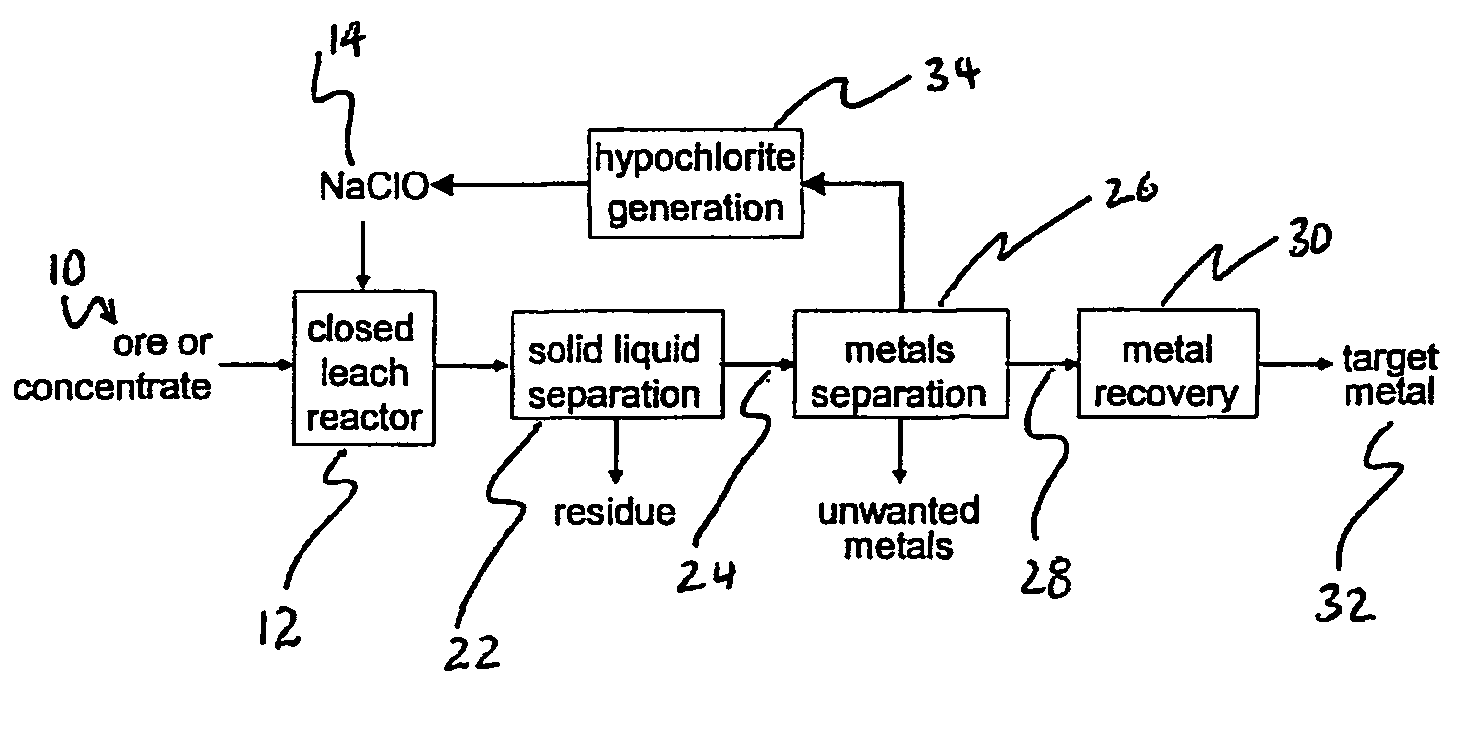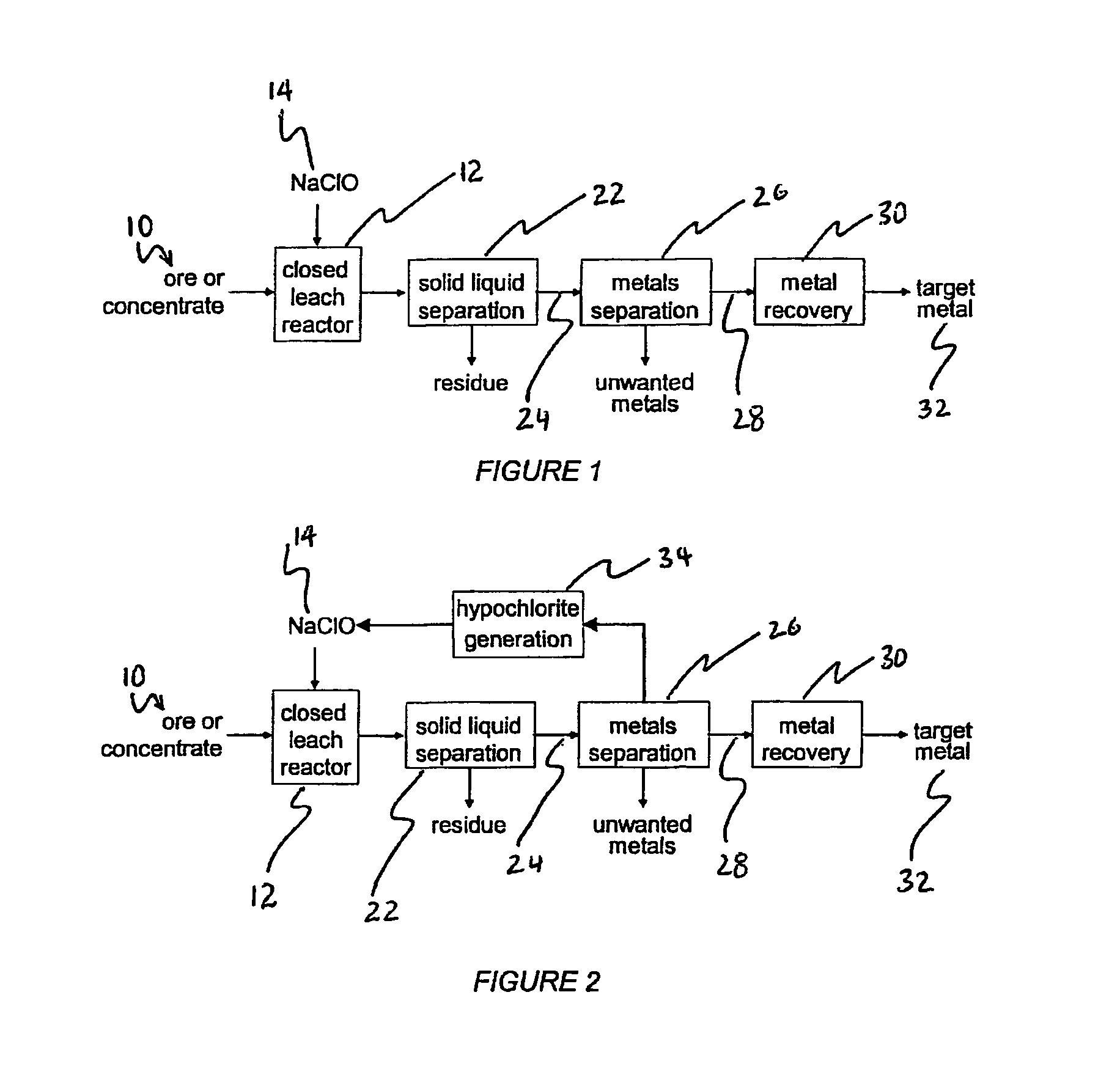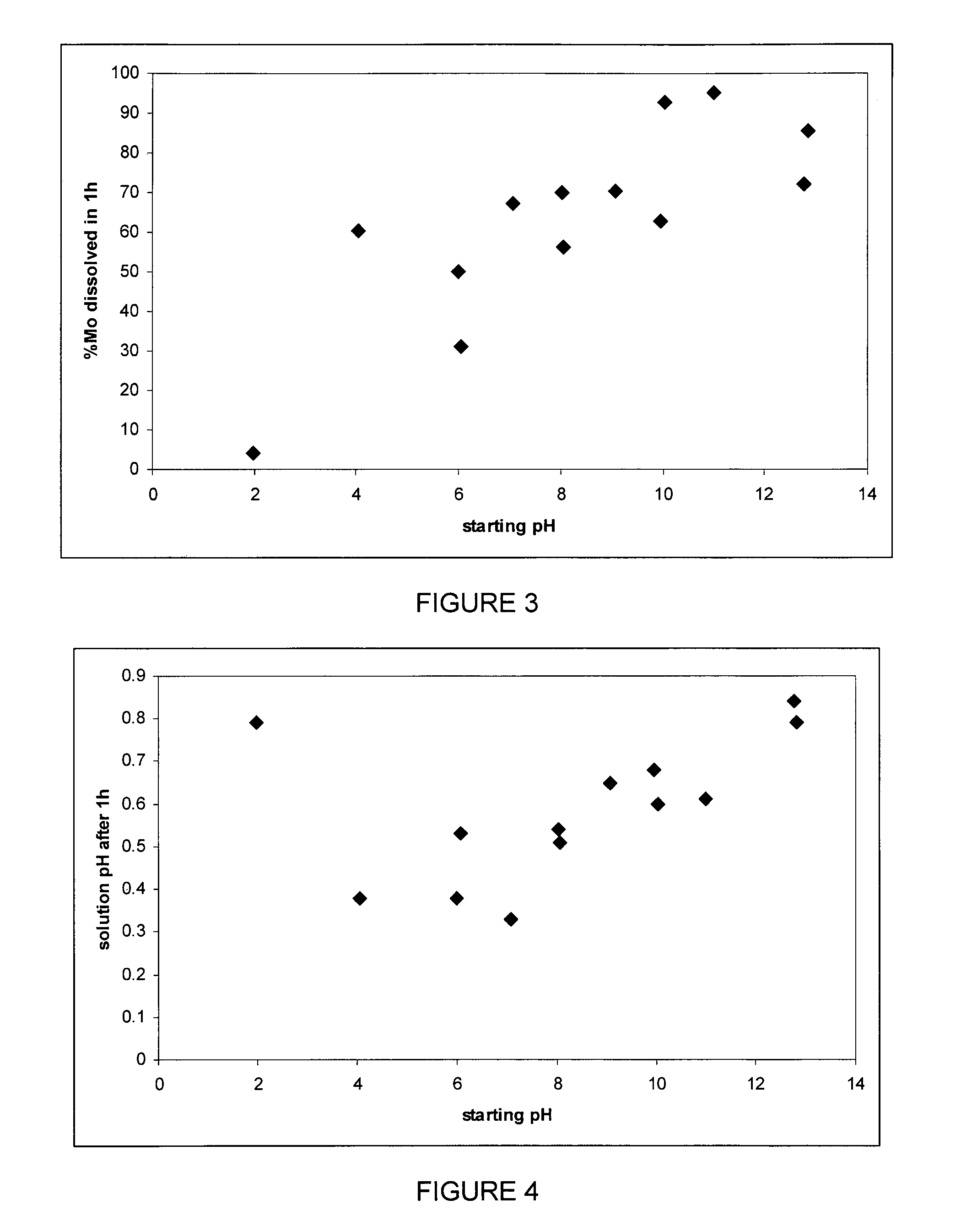Method of oxidative leaching of molybdenum—rhenium sulfide ores and/or concentrates
a technology of rhenium sulfide ores and concentrates, which is applied in the direction of improving process efficiency, etc., can solve the problems of sulphur dioxide becoming an environmentally unacceptable product, forming volatile resub>2/sub, and not perfect separation, so as to improve the recovery of molybdenum and/or rhenium
- Summary
- Abstract
- Description
- Claims
- Application Information
AI Technical Summary
Benefits of technology
Problems solved by technology
Method used
Image
Examples
example 1
[0080]A sample of molybdenite flotation concentrate (˜50% Mo) was leached at a wide range of starting pH for 1 h. Approximately 0.25 g of concentrate was mixed with 25 mL of pH adjusted ˜25 g / L NaClO solution and shaken. After 1 h the sample was centrifuged, the pH measured and the solution decanted for analysis by AAS.
[0081]The molybdenum dissolution is shown in FIG. 3. Clearly, the starting pH is of great importance in the extent of recovery with higher pH tending to give high recoveries.
[0082]Without wishing to be bound by theory, the inventors believe that exposure of the sulfide ore and / or concentrate to hypochlorite-hypochlorous acid-containing solution diminishes the formation of a passivating layer that may be responsible for the lower recoveries clearly evident at low pH where chlorine predominates.
[0083]The solution pH after 1 h is shown in FIG. 4. As can be seen, in all cases the pH is less than one, as for molybdenum recovery there is an anomalous point for a starting pH...
example 2
[0085]Iodimetric titrations were performed on the starting and final solutions in Example 1 to determine the hypochlorous acid concentrations before and after reaction in order to measure the consumption.
[0086]The solutions had excess iodide ions added to be converted from iodide to iodine by oxidation:
2I−+ClO−+2H+=I2+H2O+Cl−
2I−+HClO+H+=I2+H2O+Cl−
2I−+Cl2=I2+2Cl−
[0087]The iodine was then titrated using sodium thiosulphate of known concentration, the relevant reaction is:
I2+2S2O32−→2I−+S4O62−
[0088]From these titrations the concentration of oxidant before and after reaction can be determined with consumption simply being the difference between them. The molar consumption of oxidant per mole of molybdenum dissolved is shown in FIG. 5.
[0089]Clearly, the lowest starting pH has the highest consumption, without wishing to be bound by theory, the inventors believe this is due to volatilisation of gaseous chlorine from the solution. The remaining data suggests that the higher the starting pH ...
example 3
[0091]A molybdenum ore was obtained and the as-received sample was split, crushed and ring milled to a nominal P80 of 90 μm. Aqua regia digests performed in duplicate gave head grades of 0.051 and 0.056% Mo for an average of 0.053% Mo. Preliminary runs indicated that >99% molybdenum could be dissolved in 24 h. A series of runs was made using increasing slurry density. After 1 h a sample was taken for analysis:
[0092]FIG. 6 shows the recovery as a function of slurry density as the solid line. Clearly, high slurry densities result in reduced recoveries of molybdenum. The dashed line shows the volume of stock hypochlorite solution per gramme of ore. As can be seen these two lines have the same trend, this indicates that the reduced recovery is due to insufficient oxidant being present in the solution.
[0093]From this data, the consumption of oxidant per mole of molybdenum in the ore and per mole of molybdenum dissolved can be calculated. These data are shown in FIG. 7. The oxidant per mo...
PUM
| Property | Measurement | Unit |
|---|---|---|
| pH | aaaaa | aaaaa |
| pH | aaaaa | aaaaa |
| pH | aaaaa | aaaaa |
Abstract
Description
Claims
Application Information
 Login to View More
Login to View More - R&D
- Intellectual Property
- Life Sciences
- Materials
- Tech Scout
- Unparalleled Data Quality
- Higher Quality Content
- 60% Fewer Hallucinations
Browse by: Latest US Patents, China's latest patents, Technical Efficacy Thesaurus, Application Domain, Technology Topic, Popular Technical Reports.
© 2025 PatSnap. All rights reserved.Legal|Privacy policy|Modern Slavery Act Transparency Statement|Sitemap|About US| Contact US: help@patsnap.com



